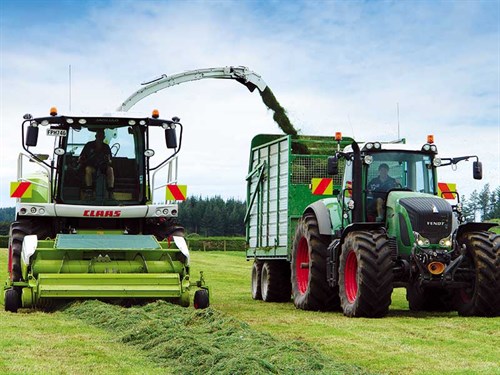The secret to making great silage
Farm Trader reveals the secrets to making great quality grass silage so you never have to disappoint your livestock again
There always seems to be a huge variation in the quality of grass silage from one year to the next and from one farm to the next.

When you ask around the farming community as to why this may be the case, you usually get the same answer: "It was a terrible spring; little sun and therefore hardly any sugar in the grass." Yet in seasons like this, there always seems to be some farmers who make some great silage, and this seems to be despite the weather.
So the question needs to be asked: "How come some farmers are able to get it right most seasons when others struggle?"I believe the reason for the difference comes down to two main factors: the quality of the material ensiled and the ensiling process itself.
There is an old saying, ‘garbage in means garbage out’, and this is no more true than in making silage. Ensuring you get the best quality material into the stack comes down to
a few simple steps.
The few simple steps are:
- Ensure that the grass is cut while quality is still high. Many farmers make the mistake of going for quantity over quality. Silage needs to be harvested at the right time to ensure quality – no later than 35 to 40 days after the last grazing or when a maximum of 10% of the ryegrass seed heads have emerged. This requires good communication with your contractor. You want to be first in the queue and not last if the weather goes against you.
- Wilting to at least 29% dry matter concentrates the plant sugars and reduces the risk of nutrients being lost from the silage stack as run-off. Not leaving it too long to wilt is also important, as grass that is too dry (i.e. more than 50% DM) is hard to compact and therefore to get rid of the oxygen.
- Chopping silage bound for the pit to five to seven centimetre also allows for good consolidation, reducing storage and feed-out losses.
- Add a quality silage inoculant at harvest time to ensure you have the right strain of lactic acid-producing bacteria in the right amount to ensure the right ensiling pathway. Quality inoculants are those that come from reputable companies, have label claims as to the number of live bacteria, are backed up by science, and are supported by those people selling them. Ideally, the bacteria present are crop specific. An example of this is Pioneer 1127, which contains grass-specific bacteria. It reduces ensiling losses and at the same time produces high-quality silage, returning a gross margin of more than $4 for every dollar spent on the inoculant.
- Compact, compact, compact. You want to get the air out of the stack as quickly as possible to ensure that the bacteria in the inoculant you are applying can get to work and produce as much lactic acid as possible. High-quality silage is always compacted and sealed correctly. For stacked silage, spread material into 100 to 150mm layers and compact until the surface is firm. Use a high-quality plastic cover and weigh it down with tyres that are touching. Seal the edges with sand or lime. For baled silage, use high-quality wrap and use the recommended stretch factor and number of wraps.

The importance of high-quality pasture silage cannot be overstated. It’s a fantastic farm systems feed that can be fed when needed, when pasture growth levels begin to fall. It’s a valuable supplement for increasing milk production and condition score gain.
In contrast, poor-quality silage is an expensive filler for dry cows. The difference in quality is largely up to things most farmers can control.
For more information, visit dairynz.co.nz or pioneer.co.nz.
Keep up to date in the industry by signing up to Farm Trader's free newsletter or liking us on Facebook



.jpg)









